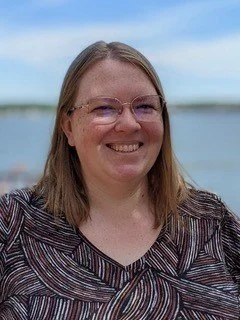Jennifer Weaver
(She/her)
Elementary Computer Science and STEAM Specialist
Baltimore County Public Schools
How did you get into CS?
I started my career in 2002 as a computer art and traditional art teacher at a magnet middle school. In my second year, I took a 1-credit technology integration course and became a huge advocate for using technology wisely to enhance instructional practices. I switched to teaching computer applications, video production, and yearbook in my third year; all very technical subjects with a creative thread that appealed to my inner artist. After that, I got certified to teach technology education and after 8 years in the middle school classroom teaching variations of computer skills and media production, I became an Instructional Technology Resource Teacher and coach in our Office of Instructional Technology. In 2018, after BCPS introduced a 1:1 device ratio for elementary and middle schools, my supervisor approached me about creating an elementary computer science course to help better prepare students for middle and high school. Principals were also struggling to have enough special area classes to provide adequate planning time for teachers, so creating a stand-alone course seemed to be the perfect solution. The timing was great because that’s the same year that MD approved its K-12 CS Standards and passed the law requiring K-12 computer science education. 7 years later, I am now the district Specialist for Elementary Computer Science and STEAM.
What are some successes and challenges that you've experienced?
When I started down this path, I didn’t know much about the CS Standards or even how to teach CS, but my father was a computer programmer, and I had dabbled in HTML and Scratch coding. I also had a strong (middle school level) understanding of computing systems and the Internet, so I wasn’t intimidated to build on that knowledge and learn new things. However, I was basically writing an entire K-5 curriculum from scratch, recruiting and training teachers with no CS certification, and maintaining a curriculum program all by myself. That isolation was my first big challenge. Once I connected with MCCE in 2019 and CSTA Maryland shortly after that, I didn’t feel so alone. However, I’m still in a unique position that doesn’t always fit into typical organizational structures. Every year for the past 8, I have been moved around under different supervisors and within different departments. This year I am in the Office of College, Career, and Technical Education, which is interesting because while my content aligns well with secondary CS, all of the other CTE programs are middle or high school. Another challenge has been, and continues to be, that computer science in elementary school isn’t understood or prioritized. That leads to my biggest success which is how far this program has come. In 2023 there were 12 elementary schools teaching our Elementary Computer Science and Innovation (eCSI) class. This year, there are 48 schools and 54 teachers! Over 19,000 elementary school students in BCPS now receive over 30 hours of CS instruction each year.
What do you find compelling about computer science?
What I find most compelling about having computer science in elementary school is that the students aren’t necessarily learning just how to code; they are learning how to problem solve, work with peers, and build other “soft” skills like patience and persistence. Teachers and administrators have shared how much this course has positively impacted students in other academic areas, even though we aren’t specifically teaching other subjects. Students have more confidence, more patience with difficult tasks, and are more willing to take risks in their learning experiences.
What's going well for you? What are you excited about?
Some of the big projects I have on my “to-do” list include working more closely with my secondary computer science colleague to make the middle school experience more consistent across schools and create a smooth articulation from kindergarten to graduation. I am also hoping that when the revised National CSTA Standards are released, I will be able to fund curriculum writers to not only realign our lessons with the updates but also build in more engineering lessons and a stronger cross-curricular STEAM approach to instruction. My vision is for this elementary special area course to be in every grade in every school and to offer learning that is fun, hands-on, and unique. I hope that it sparks student interest and provides a foundation for them to be successful in one of several possible educational and career pathways including engineering, computer science, or media arts.
Any advice?
My biggest piece of advice, especially for people who are going to teach computer science in elementary schools, is to not worry about needing to know everything. It’s okay to learn along with the students and sometimes making mistakes is the best way to model persistence and a growth mindset. And don’t forget that you’re not alone. There is a great community of CS educators out there, and I’ve never once had someone turn me down when I reached out.

